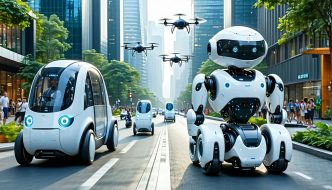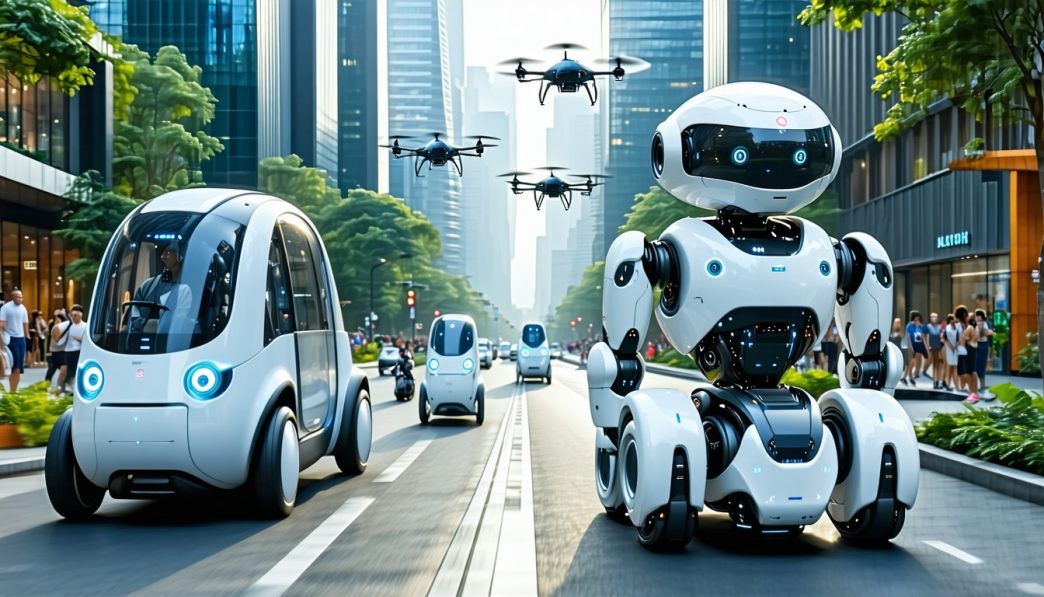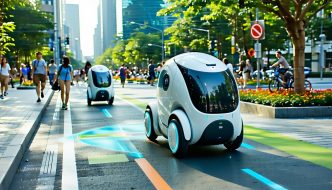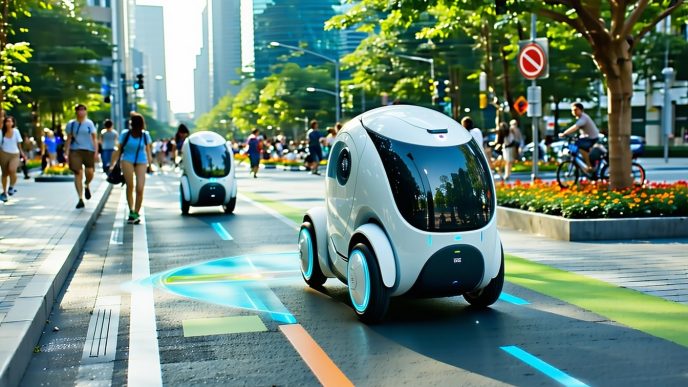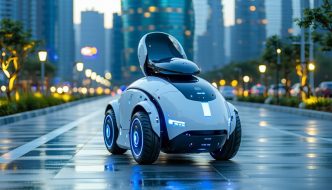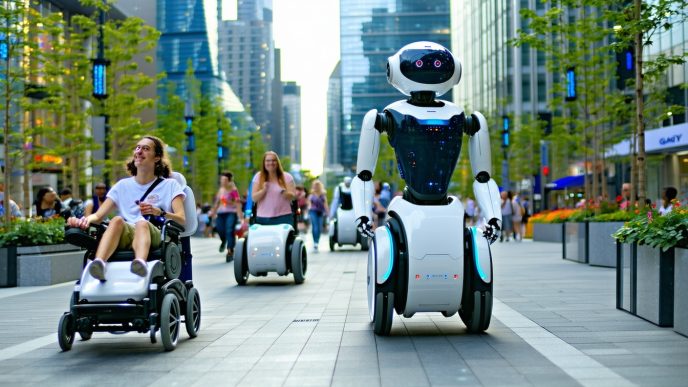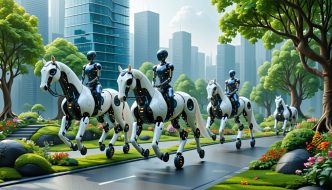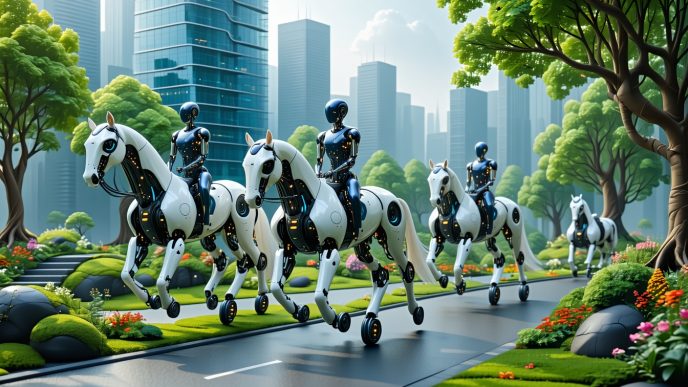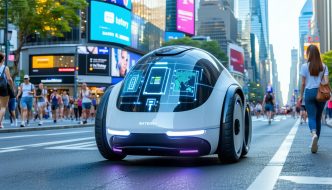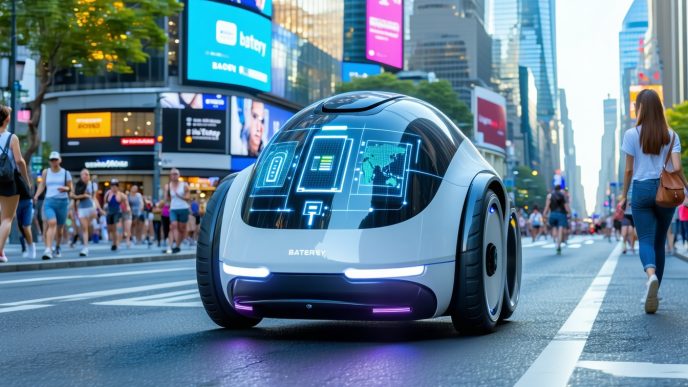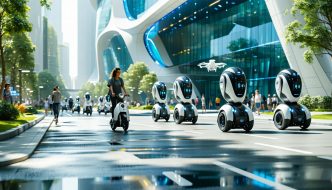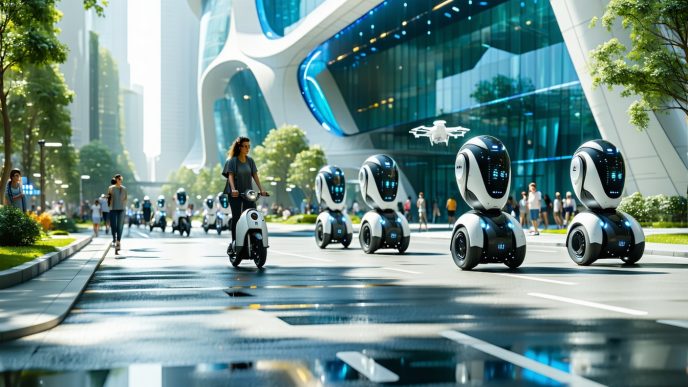The Rise of Rideable Robots in Personal Transportation
Introduction to the Evolution of Personal Mobility
The landscape of personal mobility has undergone significant changes over the past few decades. With the introduction of various modes of transportation, the focus has gradually shifted towards enhancing mobility through technology. Recently, the emergence of transportation and rideability robots has marked a new era in personal transport, serving the needs of urban commuters and tech-savvy individuals alike.
Rideable robots, which include various robot-enhanced devices like scooters, bicycles, and even skateboards, provide alternatives to conventional transportation methods. These advancements cater to the demand for flexible, efficient travel options within urban environments. The growing popularity of these innovations reflects a societal shift towards integrating technology into daily commutes.
Role of Robots in Transforming Transportation
Robots are revolutionizing how people move and interact with their surroundings. The integration of robotics in transportation not only improves convenience but also addresses key urban challenges, such as traffic congestion and environmental sustainability.
| Type of Transportation Robot | Key Features | Potential Benefits |
|---|---|---|
| Robot-Enhanced Electric Scooters | Electric propulsion, foldable design | Easy storage, reduced emissions |
| Autonomous Bikes | Self-navigating capabilities, smart sensors | Safe and convenient travel |
| Self-Driving Skateboards | Balancing technology, controlled speed | Fun and accessible commuting option |
The role of technology in personal transportation is evident with the rise of robot mobility aids geared towards providing accessibility for disabled users. Robotics also paves the way for developing new genres of transport, such as robot horses, which draw inspiration from animal movement, presenting exciting options for short-trip scenarios. For more information on these innovative designs, explore our article on robot horses and animal inspired transport.
As the industry evolves, the development of effective battery technologies is crucial. Battery range for rideable robots must be enhanced to meet the increasing demands of urban commuters. By learning more about these developments, readers can understand the complex interplay between robotics and transportation. Check our article on battery range for rideable robots for detailed insights.
Overall, the transformation brought by transportation and rideability robots is reshaping the movement paradigm, providing sustainable and accessible alternatives while meeting the aspirations of modern urban dwellers. The continued exploration of these innovations will likely yield an exciting future for personal mobility, as depicted in our discussion on the future of rideable robotics.
Applications of Robotics in Personal Transportation
Robots are significantly influencing the landscape of personal transportation. From enhancing existing vehicles to introducing entirely new modes of travel, the applications of robotics in this field are diverse and innovative. Below, we explore specific applications such as robot-enhanced electric scooters, autonomous bikes and motorcycles, and self-driving skateboards and hoverboards.
Robot-Enhanced Electric Scooters
Electric scooters have gained immense popularity in urban commuting. The integration of robotics into these scooters has led to advanced features that enhance user experience. For instance, certain models now include automatic balancing systems and real-time navigation assistance. These enhancements make riding more accessible and safer for users of varying skill levels.
| Feature | Description |
|---|---|
| Automatic Balance | Keeps the scooter upright and stable. |
| GPS Navigation | Provides route optimization and safe travel paths. |
| Smart Lock Systems | Enables users to lock and unlock scooters via mobile apps. |
The advancements in electric scooters represent a step towards integrating rideable robots for short trips into everyday life.
Autonomous Bikes and Motorcycles
Autonomous bikes and motorcycles present another pivotal advancement in personal transportation. Equipped with sensors and AI, these vehicles can navigate urban environments while ensuring rider safety. They offer features such as collision avoidance systems and adaptive speed control, making them an enticing option for urban commuters.
| Feature | Description |
|---|---|
| Collision Avoidance | Detects obstacles and adjusts path accordingly. |
| Adaptive Speed Control | Regulates speed based on traffic conditions. |
| Integrated Rider Communication | Messages riders about traffic updates and hazards. |
The rise of autonomous two-wheeled vehicles showcases how technology is revolutionizing personal mobility, offering safer and more efficient commuting options.
Self-Driving Skateboards and Hoverboards
The emergence of self-driving skateboards and hoverboards is shaping a new frontier in personal transport. These rideable robots utilize advanced robotics and AI technology to ensure a high level of control and stability. Riders simply need to step on and allow the device to navigate, providing a seamless riding experience.
| Feature | Description |
|---|---|
| Sensor Technology | Detects terrain and obstacles for safe navigation. |
| Automatic Path Planning | Computes optimal routes based on various factors. |
| Enhanced Stability Systems | Keeps riders balanced and safe during motion. |
The increasing popularity of self-driving skateboards and hoverboards highlights the potential of robot transportation vs traditional options to redefine personal mobility.
Each of these applications exemplifies the growing trend of robotics integration in personal transport, paving the way for more efficient and enjoyable commuting experiences. The technologies behind these advancements continue to evolve, aligning closely with the future of personal mobility.
Impacts on Urban Commuting
The introduction of transportation and rideability robots significantly influences urban commuting patterns. Their capabilities enhance travel experiences, address critical urban issues, and contribute to sustainable mobility solutions.
Enhancing First and Last-Mile Travel
First and last-mile travel refers to the initial and final segments of a journey, often challenging for urban commuters. Transportation and rideability robots simplify these segments by providing easy access to public transit stations or workplaces. Electric scooters and autonomous bikes serve as efficient options for covering short distances, allowing commuters to seamlessly transition between different modes of transport.
| Robot Type | Average Speed (mph) | Range (miles) |
|---|---|---|
| Electric Scooter | 15 | 20-40 |
| Autonomous Bike | 10-15 | 30-50 |
| Self-Driving Skateboard | 10 | 15-25 |
Utilizing rideable robots in first and last-mile travel enhances convenience, reduces the need for personal vehicles, and optimizes time management for commuters. For further insights, explore our article on rideable robots for short trips.
Solving Traffic Congestion Issues
Traffic congestion remains a persistent problem in urban environments, often leading to delays and frustration among commuters. The adoption of transportation and rideability robots can help alleviate congestion by reducing the number of vehicles on the roads. As more people opt for electric scooters, bikes, and other autonomous vehicles for short-distance travel, the overall traffic volume decreases.
The integration of these robots contributes to smoother traffic flows, less gridlock, and improved travel times. Cities can benefit from fewer traditional vehicles, leading to a more efficient transportation network. For a comparison of robotic transport options and their efficiency, refer to our article on robot transportation vs traditional options.
Promoting Sustainable Transportation
Sustainability is a crucial consideration in urban commuting, and transportation and rideability robots offer eco-friendly alternatives to traditional vehicles. Many of these devices are electric, reducing carbon emissions and minimizing environmental impact.
Moreover, the uptake of these smart transportation solutions encourages a shift toward greener commuting habits. Data on scooter and bike usage show a significant decrease in fossil fuel reliance:
| Transportation Mode | CO2 Emissions (g/mile) |
|---|---|
| Gasoline Vehicle | 404 |
| Electric Scooter | 0 |
| Autonomous Bike | 0 |
As cities implement and promote the use of rideable robots, they support efforts toward sustainable urban mobility. To learn more about these options, check our resource on battery range for rideable robots.
The transformation brought by transportation and rideability robots significantly shapes the future of urban commuting, making it more efficient and sustainable.
Challenges and Considerations
As transportation and rideability robots gain traction in personal mobility, several challenges must be addressed to ensure safe and effective integration into everyday commuting practices.
Safety Concerns and Regulations
Safety remains a top priority when implementing transportation robots. Questions surrounding the reliability of these devices, the potential for accidents, and the overall safety of users must be explored. Regulatory frameworks are essential to manage and oversee the deployment of these technologies. Governments are tasked with creating safety standards, testing protocols, and operational guidelines.
| Concern Category | Example Issues |
|---|---|
| Device Reliability | Mechanical failures, battery life impact |
| User Safety | Risk of falls or collisions |
| Regulatory Compliance | Adherence to traffic laws and operational limits |
Understanding operational limits, such as speed, weight capacity, and environmental factors, is crucial for user safety. For more details on safety aspects, visit our article on rideable robot stability and safety.
Infrastructure Adaptation
In many urban areas, existing infrastructure may not be equipped to accommodate rideable robots. Roadways, bike lanes, and pedestrian paths need updates to ensure safety and efficiency for all users. This could involve the development of dedicated lanes, improved signage, and better integration with public transport systems.
| Infrastructure Component | Required Modifications |
|---|---|
| Bike Lanes | Designated robot lanes |
| Sidewalks | Smoother surfaces for rideability |
| Traffic Signals | Smart signals for robot interaction |
Cities must consider these modifications to create a seamless experience for users of transportation robots. For insights into the expansion of mobility options, explore our article on robot transportation vs traditional options.
User Acceptance and Behavior
User acceptance plays a significant role in the successful adoption of transportation robots. Early adopters are essential, but for widespread usage, the general public must feel comfortable with these technologies. Education on how to use rideable robots safely and effectively is vital.
Factors that influence user acceptance include:
| Factor | Description |
|---|---|
| User Education | Understanding robot functionalities |
| Perceived Safety | Confidence in operational safety measures |
| Social Acceptance | Normalization within the community |
Encouraging positive user behavior and addressing misconceptions will be crucial for the proliferation of transportation and rideability robots. Insights on the interaction between users and these devices can be found in our article on robot rider interfaces.
By tackling these challenges, stakeholders can work towards creating a cohesive environment that embraces the future of personal mobility through rideable robots.
Future Trends in Personal Mobility
The future of personal mobility is becoming increasingly intertwined with advancements in robotics and artificial intelligence. The integration of these technologies is set to redefine how individuals navigate urban environments.
Integration of AI and Machine Learning
Artificial intelligence and machine learning are pivotal in enhancing the functionality of transportation and rideability robots. These technologies enable vehicles to learn from their environments, adapt to changing conditions, and improve performance over time. For instance, AI can process vast amounts of data from various sensors to optimize routes, enhance user experience, and ensure safety.
| Feature | Description |
|---|---|
| Path Optimization | AI algorithms analyze traffic patterns to determine the quickest routes. |
| Predictive Maintenance | Machine learning identifies potential failures before they occur, reducing downtime. |
| User Preferences | AI personalizes experiences based on past user behavior and preferences. |
Such advancements contribute to smoother and more efficient personal transport solutions, enhancing convenience for urban commuters.
Evolution of Multi-Modal Transportation
Multi-modal transportation encompasses the integration of various forms of transportation, allowing users to transition between different devices seamlessly. This evolution signals a shift towards a more coordinated transportation network. For example, a commuter may begin their journey on a self-driving bike, transition to a rideable robot for the last mile, and utilize public transit all in one connected experience.
| Modes of Transport | Benefits |
|---|---|
| Electric Scooters | Quick and efficient for short distances. |
| Autonomous Bikes | Eco-friendly and provide physical exercise. |
| Public Transit | Cost-effective for longer distances. |
This integration encourages the use of diverse transport options, ultimately promoting cleaner and more sustainable urban mobility solutions.
Customization and Personalization in Rideable Robot Design
Customization and personalization are becoming essential trends in the design of transportation and rideability robots. Users expect devices tailored to their specific needs and preferences. This can range from adjustable seating and handle heights to customizable control interfaces.
| Customization Aspect | Examples |
|---|---|
| Color Options | Users can choose the color of their rideable device to reflect their style. |
| Control Interfaces | Options for touch screens, voice commands, or manual controls for accessibility. |
| Connectivity | Integration with smart devices for a personalized experience. |
These developments not only enhance user satisfaction but also encourage wider adoption of robotic transportation solutions. The more personalized and adaptable these vehicles are, the more appealing they become to potential users.
As technology continues to advance, the future trends in personal mobility are poised to further revolutionize urban commuting and enhance the overall transportation experience. For more insights into rideable robotics, explore articles on future of rideable robotics and robot transportation vs traditional options.

